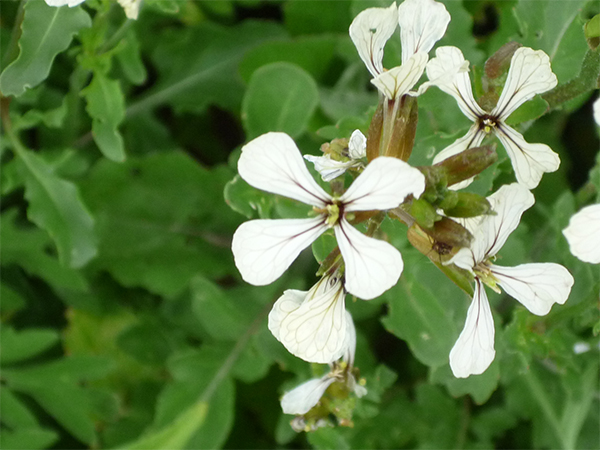Content:
Tulips are beautiful perennial bulbous plants widely used in landscape design. It is also a flower with a long history. In the wild, the first tulips appeared 10-15 million years ago. During their long history, they managed to settle throughout Eurasia and even North Africa, from Morocco and Spain to Transbaikalia and the Pamirs. Some species are found even in Scotland and Scandinavia. However, gardeners are more interested in cultivated plants - these tulips will be discussed below.
Flowers tulips: what is important to know
Lovers of these plants want to know everything about tulips. Well, it should be noted that in nature there are about 80 species of these flowers, but many of them are listed in the Red Book. The same tulips that are grown today in the open field and in greenhouses as an ornamental crop or for cutting are varieties of Gesner's tulip, Foster's tulip and their hybrids.
They began to cultivate such plants in Asia, probably in the 11th century. And a little later, cultivation of tulips reached a special heyday in the Ottoman Empire. Sometimes they even say that this is the birthplace of tulips. Although they got there, most likely from Persia. However, given the ancient history of this flower, one can hardly say anything for sure about the region of its origin.
In Europe, the tulip fashion began in the 16th century. And they were especially popular in Holland - Amsterdam is still an important center of trade in these flowers. And in those days the Netherlands played a leading role - here they made fortunes on deals with tulips.
Tulip "fever" passed as suddenly as it began. But these flowers still remain a valuable ornamental crop, and there are currently more than 1,800 varieties and forms of this plant in the world.
Today, by all accounts, Holland is the land of tulips. These flowers are mainly grown for decorative purposes. When tulips bloom in Holland (which usually happens in April) millions of tourists visit the country. They are especially attracted by the Keukenhof park, which is home to more than 7 million bulbous plants. The road along these landings will be long, but extremely picturesque.
It is noteworthy that this plant is not used in any way in European official medicine. It is considered poisonous (and indeed, at least Gesner tulips contain toxic substances). At the same time, in the East, they are popular in folk medicine.
- In China, these flowers are recommended for the treatment of various disorders of the digestive tract, including diarrhea.
- In the East, alcoholic extracts are made from the plant, which are used for stomatitis, gingivitis, and other inflammatory processes. Basically, non-poisonous varieties are selected for this.
- Flower extracts are also used in dermatology for the treatment of pustular diseases.
Considering the tulip flower, its meaning and history, one can come to the conclusion that it played a major role in world culture. Initially, it should mean happiness, wealth, prosperity. Although the black tulip is rather a negative symbol. And in the post-Soviet space, after Natasha Koroleva's song, yellow tulips began to symbolize separation.
Plant characteristic
Everyone knows what a tulip looks like. From a botanical point of view, it belongs to perennial bulbous ephemeroids - this is the name for plants with a short flowering period. The few leaves of the tulip have a rather dense and fleshy texture, their size decreasing from bottom to top.
In the wild, there are species with a large number of flowers, up to twelve pieces. Domestic tulips are mainly distinguished by single flowers, and their petals can have very different colors - white, pink, yellow, red. Their filaments are clearly visible, they expand towards the base, in some species they can be pubescent. The stigma is three-lobed. Not everyone knows, but tulips are bolls containing many flat seeds.
Tulips reproduce by bulbs, which in the 17th century amazed botanists with the complexity of the device. This bulb consists of a stem and several scales, which are actually specialized leaves. In nature, the depth of the bulb can be up to 50 cm.
Characteristics of species and varieties of crops
Like all flowers, tulips are prized for their decorative properties. Therefore, flower growers try to choose the most beautiful varieties. Nowadays, it is generally customary to plant hybrids, especially since they are very diverse, because among them you can pick up not only simple, but also terry, classic varieties that are odorless, or those that have a delicate aroma.
It is difficult to calculate how many varieties and hybrids there are, but at present it is customary to distinguish four groups:
- Early flowering tulips. This group contains simple and double flowers,
- Medium flowering tulips. In this group, the Triumph class is distinguished (it is the most numerous), which includes plants 60-70 cm high, with non-double six-petalled flowers of the most diverse shapes, from round to resembling a lily. The coloration is also very beautiful, there are even the notorious black tulips and showy varieties with edged petals. All of them are adapted for open ground. In the same group there are Darwin hybrids, these are more powerful plants with strong stems and flowers of bright and clear color. They are even more resistant to adverse conditions, but they also need care,
- Late flowering tulips, which include classes such as Rembrandt, Fringed, Parrot and others,
- The fourth group unites almost all species and hybrids that are not included in the previous ones. For example, these are the tulips of Kaufman, Foster, Greig. They are also suitable for planting in open ground.
The rules for caring for representatives of different groups differ little from each other.
Features of planting and care
Caring for tulips requires certain knowledge and skills. These plants should be planted in open, sunny areas. However, they like deeply cultivated soils with a neutral or slightly alkaline reaction.
Those who have tried to grow tulips in the country know that these plants have a very short growing season. They grow and develop rapidly in spring, autumn for them is a period of root growth, which actively occurs during the fourth and fifth weeks after planting. Thus, during the season, tulips have time not only to grow and bloom, but also to form the rudiments of future bulbs, and all this in a short time. Therefore, the requirements for soil fertility are so high.
Soil preparation includes liming. It is necessary to make 400-500 g of lime for every 1 sq. m. Light sandy soils can be improved by applying manure or compost. In heavy soils, coarse river sand and any organic matter will have to be added, but not fresh manure, since it is a source of pathogenic microorganisms.
It is very important to know how to care for tulips, how to plant them correctly so that the plants are pleasing to the eye in spring.First you need to prepare the holes for planting the bulbs. Previously, 30 g of ammonium nitrate and potassium salt are introduced there for each 1 sq. m, to a depth of 10 cm.
April-May is the time of flowering for most varieties and hybrids. Even before that, top dressing must be added to the soil.
- The first fertilizer - ammonium nitrate - is applied on frozen soil so that the plant does not burn.
- The second feeding with phosphorus, nitrogen and potassium is carried out already during the budding period.
- The third is similar to the second, it is carried out with mass flowering.
Watering the plants is done early in the morning or in the evening.
When the leaves of the plant begin to turn yellow, it's time to dig up the bulbs. Then tulips will grow well next year. A wooden or plastic box is suitable for storing them, you can also take a pot that is suitable in size. Paper must be placed on the bottom and prepared bulbs only on top. They are stored in a well-ventilated area throughout the winter. Small-bulb varieties need not be dug out (but this applies only to the southern regions).
Major diseases and pests of culture
Diseases of tulips are quite diverse, and among them there are very dangerous ones - for example, gray rot, typhulosis and fusarium.
Gray rot is a disease that affects all aerial parts of the plant, including the stems, the leaf and the flower itself, because of which they turn brown, soften, begin to rot, and at high humidity, a plaque of a characteristic shade appears on them. Sooner or later, such a plant dies.
Considering the diseases of tulip bulbs, it is worth noting that gray rot plays a significant role among them. It attacks the bulbs during storage, causing them to shrivel and turn black. They cannot give healthy shoots.
Typhulosis is also a type of rot. Sometimes gardeners cannot understand why the plant has stopped developing. If at the same time the leaves do not unfold and there are red shoots, this may indicate typhoidosis. It also affects tulip bulbs.
Fusarium gives a similar appearance - the same rotting and wrinkling of the bulb, but a characteristic odor appears. Fusarium also affects tulips during the storage period of the bulbs.
Another problem is viral variegation. If with other diseases the flowers can become smaller, then in this case they lose varietal qualities. Their petal color changes - against the background of the color inherent in this variety, lighter or even pronounced yellow stripes appear. This disease is transmitted by aphids. In addition, the virus can enter the juice when cut.
To prevent the development of diseases, they need to be especially well taken care of during the flowering period. This means that you need to constantly check the plantings, and if diseased plants are found, they must be immediately removed and burned. There is another interesting trick - plants that emit phytoncides are planted on the site of dug tulips to disinfect the soil. These are, for example, nasturtium or calendula.
Pests (for example, bulbous mites) are fought by treating plantings with insecticides. The bulbs are pickled with Fundazol or Topsin.
Tulips in landscape design
The tulip field is very beautiful. This is why tourists often come to those countries that traditionally grow these flowers for commercial purposes. But in landscape design they usually come up with other uses. Moreover, the tulip flower is universal. It can grow well in semi-shaded or sunny flower beds, on alpine slides and rockeries. Also tulips are bred in containers, which are displayed on balconies and terraces.
These flowers will beautify any garden, especially since they have high biological plasticity and are easily adaptable to any climatic conditions.In addition to the options listed above, they can be planted on lawns, in curbs along paths, as well as near buildings. They form beautiful compositions around trees and bushes. Only these flowers need to be planted so that the crown of the trees does not shade them, otherwise they will bloom worse.
Still, the flowering of tulips, even under the most favorable conditions, does not last too long. So they can be combined with plants that bloom longer. These include:
- pansies,
- daisies,
- forget-me-nots.
In addition, tulip and funkia flower beds look beautiful. The leaves of the latter begin to grow actively when the tulips gradually fade.
Combinations with other spring-blooming bulbous plants look good. You can select varieties so that they bloom at the same time. For instance:
- late-flowering daffodils go well with the tulips of the Triumph group;
- the varieties of the Kaufman group are suitable for cyclamen daffodils;
- The tulips can be accompanied by hyacinths.
When forming a flower bed, the main thing is to choose the right timing for flowering.
How to keep cut tulips fresh
Tulips in a vase are always pleasing to the eye, but they require certain care that would prolong their life. You also need to find an appropriate vase that will not be too deep.
If outside the window - cool and cloudy weather, the cutoff time does not matter. To do this, choose those plants, the buds of which are already painted and have begun to bloom slightly.
If tulips are cut for a bouquet, then before putting them in a vase, extra leaves are cut from them, removing them from the bottom of the stem. They will only spoil the water. To prevent the plants from twisting, each flower is wrapped in paper and placed in a cool place for a couple of hours so that the stems do not bend.
In order for the bouquet to retain its fresh appearance for a long time, the water for it must be cool, well-separated. So that pathogenic microorganisms do not grow in it, an aspirin tablet or vinegar is added to the water at the rate of 1 tbsp. spoon for 1 liter of water. In addition, to keep it fresh, you need to add literally a couple of potassium permanganate crystals to it.
To feed tulips, add a sugar solution (3%) to the water. It is also important for them to choose the right companions. For example, a twig of a cypress or a thuja, placed in a vase with such a bouquet, prolongs the life of tulips and gives them a more intense color. And the neighborhood with daffodils, carnations, poppies, lilies is very disliked by these flowers.
If you need to transport tulips without water to keep the flowers fresh, you need to wrap them in paper and place them in the refrigerator. In case of high humidity and temperatures up to + 3 degrees, flowers can be stored for two weeks.
After the flowers are taken out of the refrigerator, they are cut and placed in water - first in paper so that they adapt to the temperature drop, then after half an hour the wrapper is removed. Flowers quickly recover and stand in the water as much as immediately after cutting, pleasing the eye with their elegance and bright colors of delicate petals.

















